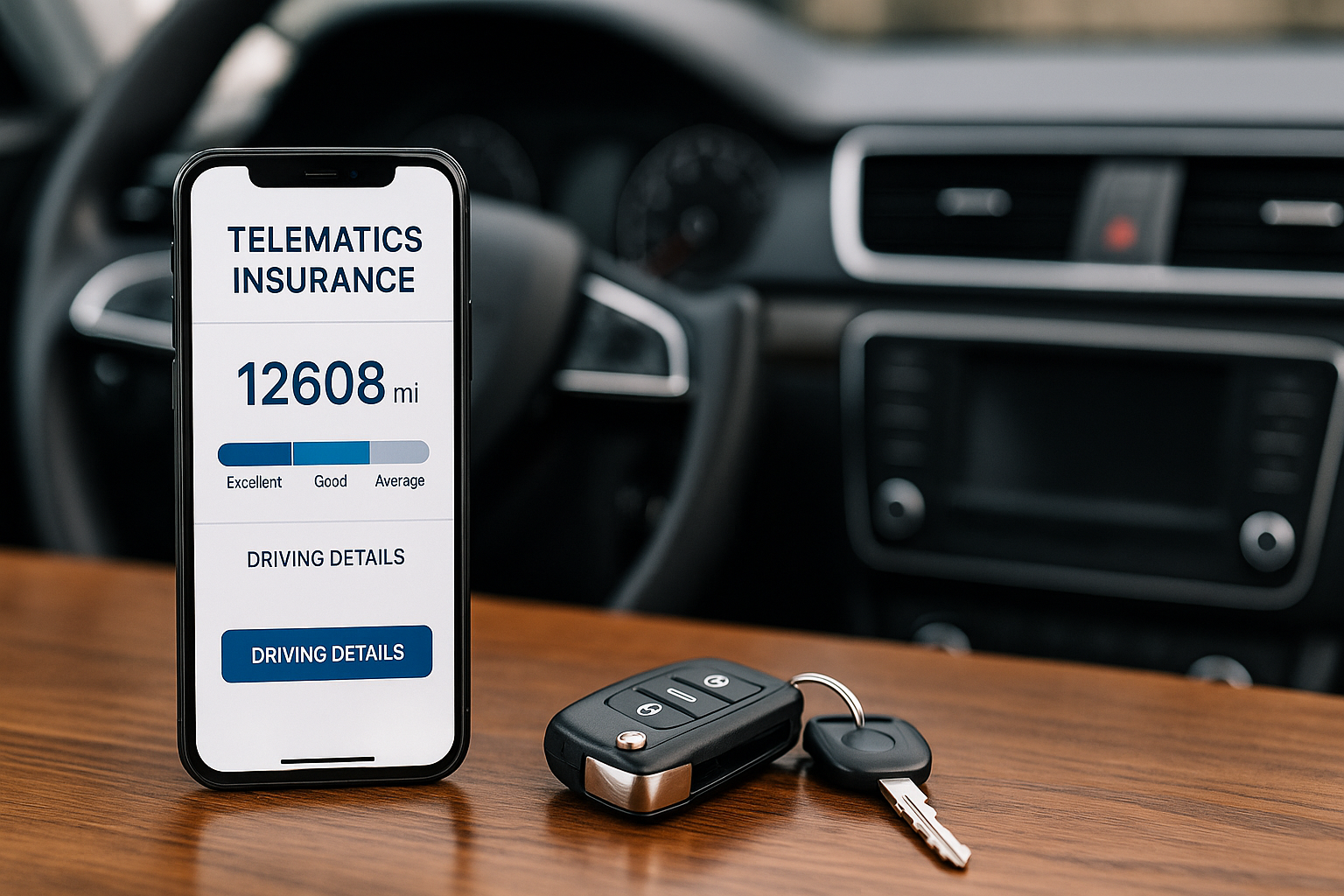Hook: Ever wonder if you could save on insurance by simply driving less? Telematics car insurance and pay per mile insurance programs promise usage‑based savings—but do they deliver? This guide breaks down how these policies work, who benefits most, and what to watch out for before signing up.
- How pay‑per‑mile and telematics policies calculate your premium
- Pros and cons of usage‑based insurance
- Real‑world cost comparisons and enrollment tips
What Is Telematics Car Insurance?
Telematics car insurance uses a small device or smartphone app to track your driving behavior and mileage. Insurers collect data on:
- Total miles driven (pay‑per‑mile component)
- Time of day you drive (night driving can carry higher risk)
- Hard braking, rapid acceleration, and cornering (safety metrics)
- Overall driving patterns (commute vs. leisure use)
Based on these factors, your insurer adjusts your rate monthly or at renewal, rewarding safe, low‑mileage drivers with discounts.
How Pay‑Per‑Mile Insurance Works
- Base Rate Plus Per‑Mile Charge: You pay a fixed base premium to cover standing risk factors (age, location, vehicle type). On top of that, you’re billed a few cents per mile driven—often in the range of $0.05–$0.20 per mile.
- Reporting & Billing: A telematics device automatically logs each mile. At month’s end, your insurer tallies the miles and applies the per‑mile charge to your statement.
- Discount Tiers: Some programs cap your per‑mile fee after a threshold, or offer additional reductions for safe‑driving behavior.
Comparing Cost: Traditional vs. Usage‑Based
Consider two drivers—Alice and Bob—both with a traditional full‑coverage premium of $1,200/year:
| Factor | Alice (8,000 mi/yr) | Bob (15,000 mi/yr) |
|---|---|---|
| Base Premium | $700 (after signup discount) | $700 |
| Per‑Mile Rate | $0.08/mi | $0.08/mi |
| Annual Per‑Mile Cost | $640 | $1,200 |
| Total Annual Cost | $1,340 | $1,900 |
Analysis: Alice pays $140 more than her original $1,200 rate—but Bob pays $700 more. Low‑mileage drivers often benefit, while high‑mileage drivers may see higher bills.
Pros of Pay‑Per‑Mile & Telematics Insurance
- Fairness: You pay for the miles you drive, aligning cost with usage.
- Behavior Rewards: Safe‑driving discounts can lower rates further for disciplined drivers.
- Awareness & Feedback: Telematics apps often provide driving tips and trip summaries to help you improve habits.
- Temporary Discounts: If you switch to remote work or travel less, you see immediate savings.
Cons and Pitfalls to Watch
- Privacy Concerns: Continuous location and behavior tracking may feel intrusive.
- Unpredictable Costs: Sudden increases in mileage—road trips or new jobs—can spike your premium unexpectedly.
- Device Reliability: Data transmission errors or device malfunctions may lead to billing disputes.
- Mixed Discounts: If your insurer doesn’t cap per‑mile charges or combine telematics discounts effectively, savings may be minimal.
Who Benefits Most?
Pay‑per‑mile and telematics programs tend to favor:
- Urban Dwellers: Short commutes and access to public transit reduce annual mileage.
- Part‑Time Drivers: Retirees, students, or remote workers with low monthly miles.
- Safe‑Driving Enthusiasts: Individuals who value feedback and adjust driving to avoid harsh braking and speeding.
Tips for Maximizing Savings
- Estimate Your Annual Mileage: Review odometer readings over the past year to set realistic expectations.
- Compare Multiple Providers: Not all telematics programs are created equal—shop rates and discount structures.
- Leverage Usage Caps: Look for plans that cap per‑mile charges after a set threshold.
- Maintain Safe Driving: Avoid harsh maneuvers and follow posted speed limits to qualify for behavior‑based discounts.
- Read Terms Carefully: Check for device fees, data privacy clauses, and billing dispute procedures.
FAQs
- Q1: Will enrolling in telematics raise my premium if I drive more?
- A1: Possibly—if you exceed estimated mileage significantly, your total cost could surpass a traditional policy.
- Q2: Can I switch back to a standard policy?
- A2: Most insurers allow you to revert to a traditional rate at renewal, though you may lose any loyalty discounts.
- Q3: Do telematics discounts apply to all coverage types?
- A3: Typically they apply only to your liability and collision premiums—not comprehensive or add‑on coverage, though policies vary.
Conclusion & Next Steps
Whether pay per mile insurance or broader telematics car insurance makes sense depends on your driving habits and risk tolerance. Low‑mileage, safety‑focused drivers can unlock meaningful savings, while frequent drivers may find traditional flat‑rate policies more predictable. Start by estimating your annual miles, comparing program structures, and reading the fine print. With careful planning and smart enrollment, you can determine if a usage‑based policy will put more money back in your pocket.
